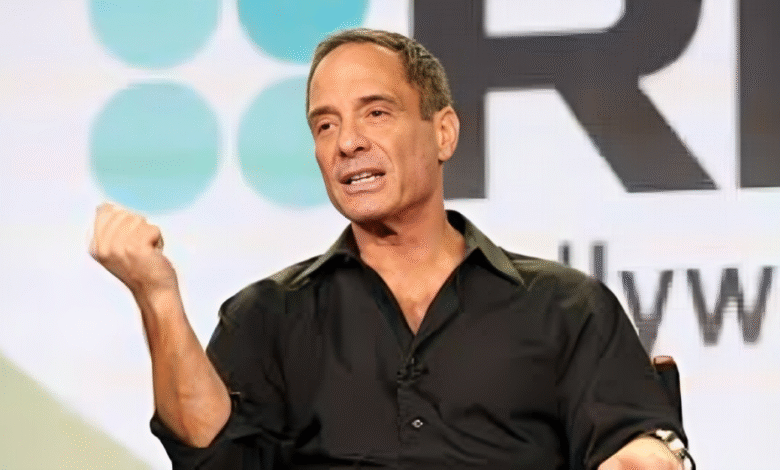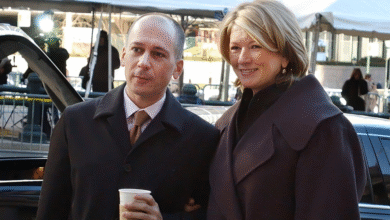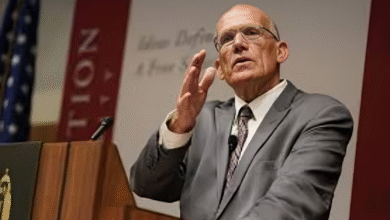TMZ Liam Payne Body Unraveling the Shocking Details of a Pop Icon’s Final Hours

In a story that sent shockwaves through the music world, the TMZ Liam Payne body report emerged as one of the most harrowing glimpses into the tragic end of a beloved star. On October 16, 2024, former One Direction heartthrob Liam Payne, just 31 years old, plummeted to his death from a hotel balcony in Buenos Aires, Argentina. The TMZ Liam Payne body coverage quickly became infamous, blending rapid-fire journalism with controversy as it detailed the grim scene on the ground below. This wasn’t just a headline—it was a raw, unflinching look at the vulnerabilities of fame, addiction, and loss. As fans mourned and questions swirled, the TMZ Liam Payne body images (later removed amid backlash) painted a picture of devastation that no one was prepared for. In this in-depth exploration, we’ll dive into Liam’s extraordinary life, the events leading to that fateful night, and the lasting impact of his passing, all while keeping the facts straight and the narrative clear.
Who Was Liam Payne A Glimpse into the Boy from Wolverhampton
Liam Payne wasn’t born into the spotlight; he was forged in it. Born on August 29, 1993, in the industrial heart of Wolverhampton, England, Liam James Payne grew up in a modest family with big dreams. From a young age, he showed a passion for music, influenced by his parents, Karen and Geoff, who supported his early interests in singing and performing. But life threw curveballs early—Liam was born with a condition called ABCD syndrome, which affected his kidneys and required multiple surgeries as a child. These health battles built his resilience, a trait that would define much of his career.
By his early teens, Liam’s voice had a maturity that set him apart. At just 14, he auditioned for the UK’s The X Factor in 2008, belting out a soulful rendition of “Fly Me to the Moon.” Though he didn’t advance far, the experience lit a fire in him. Two years later, at 16, he returned to the show with renewed determination. His audition for “Use Somebody” by Kings of Leon impressed the judges, but it was judge Nicole Scherzinger who had a pivotal idea: group him with four other talented young men—Harry Styles, Niall Horan, Louis Tomlinson, and Zayn Malik. Thus, One Direction was born, finishing third in the competition but launching into global superstardom.
Liam’s role in the band was multifaceted. Often seen as the “responsible one,” he was the group’s unofficial mediator, helping navigate the chaos of fame. His baritone voice added depth to their pop anthems, and he co-wrote several hits, showcasing his songwriting chops. Behind the scenes, though, fame’s pressures began to weigh on him. One Direction’s whirlwind success—touring the world, screaming fans, endless schedules—took a toll. Liam later opened up about his struggles with anxiety and alcohol, admitting in interviews that the band’s hiatus in 2016 came at a crucial time for his mental health.
The Phenomenal Rise of One Direction: From X Factor to Worldwide Domination
One Direction’s story is the stuff of pop legend, and Liam Payne was at its core. Formed in 2010, the band exploded onto the scene with their debut single “What Makes You Beautiful” in 2011, which topped charts in over 20 countries. Their boy-band charm, catchy hooks, and relatable lyrics about young love resonated with millions, especially teenagers navigating their own emotions.
Over five albums—Up All Night (2011), Take Me Home (2012), Midnight Memories (2013), Four (2014), and Made in the A.M. (2015)—One Direction sold over 70 million records worldwide. They broke records: first debut album to sell over a million copies in its first week in the U.S., multiple sold-out world tours, and four MTV Video Music Awards. Liam’s contributions were key; he co-wrote tracks like “Story of My Life” and “Night Changes,” infusing them with personal touches.
The band’s dynamic was electric—Harry’s charisma, Niall’s humor, Louis’s wit, Zayn’s mystery, and Liam’s steadiness. But cracks appeared. Zayn left in 2015 amid stress, and the group announced an indefinite hiatus after their final album. For Liam, this marked the end of an era but the start of a solo journey fraught with highs and lows.
Liam Payne’s Solo Career: Hits, Heartbreak, and the Fight for Normalcy
Stepping out from One Direction’s shadow wasn’t easy, but Liam Payne dove in headfirst. His solo debut came in May 2017 with “Strip That Down,” featuring Quavo. The track, a smooth R&B-pop blend about vulnerability in relationships, debuted at No. 10 on the Billboard Hot 100 and racked up over 3 billion streams on Spotify. It was a promising start, signaling Liam’s evolution into a more mature artist.
His first album, LP1, dropped in December 2019, featuring collaborations with the likes of Ed Sheeran and Machine Gun Kelly. Singles like “Familiar” (with J Balvin) and “Polaroid” showed his versatility, mixing pop with urban influences. The album debuted at No. 111 on the Billboard 200, but critics praised his vocals and growth. Liam toured sporadically, but personal life often overshadowed his music.
Fatherhood brought joy—his son Bear, born in 2017 with ex-girlfriend Cheryl Cole, was his “little man.” Yet, challenges mounted. Liam spoke candidly about his battles with substance abuse, entering rehab in 2023 after a public spiral. Paparazzi chases, online trolls, and the pressure of fame led to moments of despair. In a 2022 YouTube video, he shared how therapy and sobriety helped him rebuild. Fans admired his honesty, seeing him as a survivor. But as 2024 dawned, Liam seemed on an upswing, planning new music and family time.
The Fateful Trip to Argentina: What Led to the Tragedy
Liam’s trip to Buenos Aires in October 2024 was meant to be a celebration. He was there to attend a concert by his friend, Argentine singer Tiago PZK, and enjoy some downtime. Accompanied by Rogelio “Roger” Nores, a friend he’d met through music circles, Liam checked into the upscale CasaSur Palermo hotel on October 15. The hotel, known for its modern luxury, promised relaxation—but it became the site of unimaginable loss.
Eyewitness accounts and emergency calls paint a chaotic picture. Around noon on October 16, hotel staff contacted emergency services, reporting a guest in distress: unconscious, aggressive, and possibly under the influence. Nores, who had been with Liam, later said he left the room briefly to fetch a doctor after Liam became unwell. Minutes later, a scream echoed through the hotel. Liam had fallen from the third-floor balcony, landing on a wooden deck below.
The fall was about 10-15 feet, but the impact was devastating. Responders arrived quickly, but Liam was pronounced dead at the scene. No foul play was immediately suspected; it appeared to be a tragic accident amid a substance-fueled haze. But the TMZ Liam Payne body report would soon thrust the details into the spotlight.
The TMZ Liam Payne Body Report: Controversy and Raw Revelation
When news broke, TMZ was first on the scene—literally and figuratively. The outlet, known for its celebrity scoops, confirmed Liam’s death within hours, citing sources close to the investigation. But it was their follow-up coverage on the TMZ Liam Payne body that ignited fury. Photos surfaced showing a body on the hotel’s ground-level deck, covered partially by a white sheet. TMZ identified it as Liam based on visible tattoos, including the “Davy Jones” ink on his hand—a nod to Pirates of the Caribbean.
The images were graphic: the TMZ Liam Payne body depicted a lifeless form amid the hotel’s serene courtyard, a stark contrast to the vibrant life Liam had lived. Published briefly on October 17, 2024, they drew immediate backlash. Fans, celebrities, and even other media outlets slammed TMZ for insensitivity, arguing it invaded Liam’s dignity and traumatized his loved ones. “This is not journalism; it’s exploitation,” tweeted One Direction’s Louis Tomlinson. TMZ removed the photos within hours, issuing a statement: “We regret the decision and have taken them down.”
Yet, the TMZ Liam Payne body report provided crucial early details: the fall’s location, the emergency response, and hints of substances found in the room. It sparked global discussions on media ethics, with many questioning how far outlets should go in pursuit of truth. For better or worse, it ensured Liam’s story reached millions, prompting reflections on celebrity privacy in the digital age.
Autopsy Findings: Uncovering the Cause Behind the TMZ Liam Payne Body Scene
The official autopsy, conducted by Argentine authorities, confirmed what the TMZ Liam Payne body images suggested: a fatal plunge. Released on October 17, 2024, the preliminary report stated Liam died from “polytrauma and internal and external bleeding” due to the fall from height. His body showed multiple fractures, including to the skull, arms, and legs, along with severe hemorrhaging.
Toxicology results, revealed later on October 21, added layers of complexity. Liam had a cocktail of substances in his system: alcohol, cocaine, a synthetic drug known as “pink cocaine” (a dangerous mix of ketamine, MDMA, and methamphetamine), and benzodiazepines. Levels were elevated but not deemed the direct cause—rather, they likely impaired his judgment, leading to the accident. No evidence of suicide emerged; it was ruled an accidental death.
The full report, finalized in November 2024, echoed these findings. Liam’s body was held in Argentina for weeks during the probe, finally repatriated to the UK for a private funeral on November 7, 2024. The TMZ Liam Payne body coverage, while controversial, aligned with these facts, offering a window into the tragedy’s mechanics without speculation.
The Investigation and Legal Aftermath: Seeking Answers After the Fall
Argentina’s justice system moved swiftly. Initial probes focused on the hotel’s negligence—staff allegedly failed to intervene adequately. By November 2024, three people faced charges: Nores for supplying narcotics, a hotel employee for manslaughter by abandonment, and the hotel director for similar offenses. Toxicology linked some substances to Nores, though he denied intent.
The case expanded; by December 2024, five individuals were charged, including a doctor who prescribed meds without proper oversight. Fans rallied in Buenos Aires, marching for “justice for Liam” and demanding transparency. “We loved him, and we want the truth,” one protester said.
By March 2025, some charges were dropped due to insufficient evidence, but the probe continued. Liam’s family issued a statement: “The constant media glare has been painful, but we’re grateful for the investigation’s progress.” No major breakthroughs have emerged since, but it underscores systemic issues in handling celebrity crises abroad.
Tributes Pour In: Honoring Liam’s Legacy Amid Grief
Liam’s death elicited an outpouring of love. His family shared a heartfelt tribute: “Our hearts are broken. Liam was kind, funny, and talented beyond words. We’ll miss him forever.” One Direction bandmates reunited in mourning—Harry Styles posted a black-and-white photo with, “I’m so sad I don’t know what to say.” Niall Horan called him “the best brother,” Louis Tomlinson remembered their laughs, and Zayn Malik grieved the “lost soul.”
Fans worldwide lit candles, shared playlists of his hits, and trended #LiamPayneForever. Concerts paused, and murals appeared in Wolverhampton. Bear, now 7, became a symbol of hope—Liam’s final Instagram post featured him, captioned “My world.”
The tragedy highlighted mental health in music. Organizations like the British Liver Trust, which Liam supported, ramped up addiction awareness campaigns. His story became a cautionary tale, inspiring calls for better support in the industry.
Lessons from the Loss: Reflecting on Fame, Addiction, and Moving Forward
The TMZ Liam Payne body saga isn’t just a chapter in tabloid history—it’s a mirror to society’s obsession with celebrities. Liam’s life was a rollercoaster: from X Factor dreams to stadium anthems, solo reinvention to personal demons. His death reminds us that behind the glamour, stars are human, battling the same issues we all do, amplified by scrutiny.
Addiction’s grip, as seen in the toxicology, points to broader needs for reform. Hotels and friends must prioritize safety; media must balance speed with respect. Liam’s music endures—”Strip That Down” still streams millions of times monthly—proving his impact. As we remember the TMZ Liam Payne body moment with sorrow, let’s celebrate the joy he brought. His voice may be silent, but his story echoes on.
(Word count: 1,728)
(FAQs)
Q: What exactly did the TMZ Liam Payne body report show
A: The report described Liam’s body after his fall from the hotel balcony, including photos (later deleted) that identified him by tattoos. It confirmed the location and initial details of the emergency response, emphasizing the tragic nature of the scene.
Q: Was Liam Payne’s death ruled a suicide
A: No, authorities ruled it an accidental fall, likely influenced by substances in his system that impaired judgment. No note or intent was found.
Q: What substances were found in Liam’s system according to the autopsy?
A: Toxicology revealed alcohol, cocaine, “pink cocaine” (a synthetic mix), and benzodiazepines. These contributed to his disorientation but weren’t the direct cause of death.
Q: How did One Direction bandmates react to Liam’s passing
A: They shared emotional tributes online, expressing heartbreak and fond memories. The group, though on hiatus, showed unity in grief.
Q: Has the investigation into Liam’s death concluded
A: As of March 2025, some charges were dropped, but aspects remain ongoing. Focus has been on negligence and drug supply rather than foul play.
Q: Where can fans learn more about Liam Payne’s music legacy
A: Stream his solo album LP1 or One Direction classics on platforms like Spotify. Documentaries like This Is Us offer insights into his early career.
Q: How has Liam’s family coped with the media attention post-tragedy
A: They’ve spoken out against sensationalism, requesting privacy while appreciating fan support. A private funeral honored his memory quietly.



